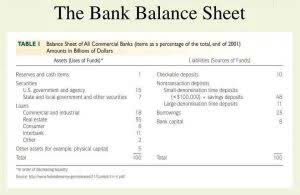
Even dividend payout reductions, while less injurious, are problematic for many shareholders. For some industries, investors consider dividend payments to be necessary cash outlays similar to capital expenditures. Investors typically monitor capital expenditures used for the maintenance of, and additions to, a company’s physical assets to support the company’s operation and competitiveness. In short, investors want to see whether and how a company is investing in itself. Cash flow analysis is an important aspect of a company’s financial management because it underscores the cash that’s available to pay bills and make purchases—generally, money it needs to run and grow the business. This section covers revenue earned or assets spent on Financing Activities.

What is the primary purpose of cash flow analysis in business decision-making?
Liabilities on the balance sheet are split between current liabilities and long-term liabilities. That’s because your business has to pay for all the things it owns (assets) by either borrowing money (taking on liabilities) or taking it from you, the owner (issuing shareholder equity). Because the balance sheet reflects every transaction since your business started, it reveals your business’s overall financial health. The balance sheet provides an overview of the state of your business finances at a specific point in time, also known as the reporting date.
Cash Flow From Investing Activities

As a result, depreciation is added back into the cash flow statement to determine the real cash generated by operating activities. Depreciation itself is a non-cash expense, meaning no cash is actually paid out when depreciation is recorded in the income statement. When analyzing the cash flow from operating activities, particularly under the indirect method, we start with net income and adjust for changes in working capital and non-cash expenses. Before analyzing the different types of positive and negative cash flows from investment activities, it is essential to review when a company’s investment activity includes its financial statements. The primary purpose of cash flow analysis is to provide insights into a company’s liquidity, profitability, and overall financial stability. It enables businesses to make informed decisions regarding investments, financing, and operations by examining the inflow and outflow of cash within the company.

Purpose of the Cash Flow Statement
In the current year, Clear Lake took out additional notes payable (a cash inflow). We can see this by the increase in their notes payable account from the prior year to current year ($40,000 to $50,000). Dividends of $30,000 were paid to shareholders (found on the statement of retained earnings and the statement of owner’s equity). Finally, we see that Clear Lake must have cash flow from assets issued additional common stock, as their common stock balance increased from $75,000 to $80,000. The statement of cash flows also helps external users determine the driving forces behind the firm’s cash flows. They can see if cash is generated primarily by daily operations or if cash is being generated or consumed by events outside the firm’s normal course of business.
Cash From Financing Activities

Investment activities are integral to the company’s cash flow statement, which reports revenue and expenditure over time. Investment activities include any resources and costs from a company’s investment. These may consist of the purchase or sale of goods, loans made to merchants or received from customers, and payments related to acquisitions are included in this section. Lenders and creditors https://www.bookstime.com/ often use cash flow analysis to assess a company’s creditworthiness, as it provides insights into the business’s ability to meet its debt obligations. Evaluate the investing cash flow to determine the company’s investment strategy and its impact on long-term growth prospects. Decreases in net cash flow from investing normally occur when long-term assets are purchased using cash.
When Capital Expenditures Increase, What Happens to Cash Flow?
Having enough money to pay the bills, purchase needed assets, and operate a business to make a profit is vital to a company’s success and longevity. For small businesses, Cash Flow from Investing Activities usually won’t make up the majority of cash flow for your company. But it still needs to be reconciled, since it affects your working capital. Using the cash flow statement example above, here’s a more detailed look at what each section does, and what it means for your business.
How to Build a Statement of Cash Flows in a Financial Model

Meanwhile, it spent approximately $33.77 billion in investment activities, and a further $16.3 billion in financing activities, for a total cash outflow of $50.1 billion. Direct cash flow statements show the actual cash inflows and outflows from each operating, investing, and financing activity. While the indirect cash flow method makes adjustments on net income to account for accrual transactions. Investing activities include cash flows from the sale of fixed assets, purchase of a fixed asset, sale and purchase of investment of business in shares or properties, etc.
- The balance sheet provides an overview of the state of your business finances at a specific point in time, also known as the reporting date.
- Positive cash flow reveals that more cash is coming into the company than going out.
- There are two forms of accounting that determine how cash moves within a company’s financial statements.
- Free cash flow is an important measurement since it shows how efficient a company is at generating cash.
- Purchases or sales of assets, loans made to vendors or received from customers, or any payments related to mergers and acquisitions (M&A) are included in this category.
- Management makes informed decisions about investments, divestitures, or replacements by assessing which assets yield strong cash flows and which don’t.
The articles and research support materials available on this site are educational and are not intended to be investment or tax advice. All such information is provided solely for convenience purposes only and all users thereof should be guided accordingly. Therefore, it does not evaluate the profitability of a company as it does not consider all costs or revenues.